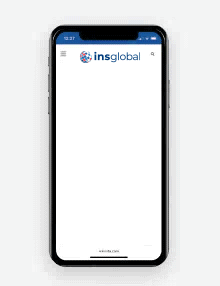Training employees without a clear plan is like setting off on a journey without a map, yet many companies continue to roll out training programs that seem valuable but fail to deliver results. Why? Typically, it’s because those in charge haven’t taken the time to understand what their teams truly need and instead are focused on the latest trends or flashy training products. This is where a training needs assessment becomes critical.
A proper training needs assessment is the first and most important step in building an effective, results-driven learning and development strategy. It’s estimated that the average cost per employee for training is around $1,200, and that’s only for new employees. Keeping employees up-to-date in terms of the skills they need to thrive in their environment requires long-term costs and attention, so rather than guessing what your workforce needs, this kind of assessment will provide real data that reveals where knowledge and skills gaps are and how best to fill them.
Training that’s informed by assessment isn’t just more effective. It’s more targeted, cost-efficient, and impactful at every level of the organization.

Tired of scrolling? Download a PDF version for easier offline reading and sharing with coworkers
What is a Training Needs Assessment?
A training needs assessment is a systematic process used to identify the skills, knowledge, and competencies employees need to perform effectively in their roles. More than simply asking questions about types of training, it’s a systematic approach that helps organizations pinpoint areas where training is needed and ensures that development programs are tailored to drive performance improvement.
Training needs assessments are their own processes that examine where employees currently stand in terms of performance and what’s required to meet individual, team, and company-wide objectives. The goal is to bridge the gap between current capabilities and future demands through targeted training solutions.
Rather than a one-time checklist or a general audit, a proper training needs assessment is strategic, data-informed, and fully integrated into broader organizational planning.
Why is a Training Needs Assessment Important?
Jumping into training without assessing needs is one of the most common mistakes businesses make, leading to significant waste in terms of time and resources.
A training needs assessment ensures that training investments are justified, effective, and aligned with what matters most: your people and your goals. When companies conduct proper assessments, they’re better equipped to:
- Increase productivity
- Build confidence
- Improve retention
- Stay competitive in a rapidly changing market
Key Benefits of a Training Needs Assessment
When done right, a training needs assessment delivers far more than a list of skill gaps. It becomes a catalyst for meaningful change across your organization. From sharper performance to smarter budgeting, the benefits are wide-reaching and long-lasting.
Identifies Skill Gaps and Development Opportunities
Every organization has hidden strengths and weaknesses, but a workforce development assessment helps to bring them out into the open and keeps them in focus. It identifies the precise areas where employees need support, training, or development, and highlights untapped opportunities for growth.
Rather than relying on assumptions, you’re working with real insights. This leads to better training design, stronger outcomes, and a more capable workforce.
When gaps are clearly defined, solutions become easier to implement. Teams become more confident, productive, and equipped to meet their goals head-on.
Aligns Training with Business Goals and Objectives
Training doesn’t exist in a vacuum, and as such, every development initiative should support broader company goals, whether it’s improving customer service, boosting innovation, or increasing sales.
A training evaluation method that connects employee development with strategic objectives ensures that your training efforts have a measurable business impact. This alignment builds leadership buy-in, clarifies success metrics, and drives real progress on key priorities.
Without alignment, training risks becoming disconnected from the realities of the business, making it nice in theory but irrelevant in practice.
Improves Employee Performance and Productivity
One of the clearest outcomes of a proper training needs assessment is performance improvement, where you identify exactly what’s holding employees back and offer training that addresses it directly.
This isn’t just about correcting mistakes. It’s about creating a workforce that’s engaged, proactive, and constantly improving. Proper investment in training is investing in the future, not just the future of specific skills, but the future of the people involved.
Better-trained employees make fewer errors, work more efficiently, and contribute at a higher level. That translates directly into stronger business results.
Optimizes Training Budget and Resources
Budgets aren’t unlimited, and wasting money on irrelevant or ineffective training can do more harm than good. A thorough assessment helps you prioritize where to invest by identifying what training is truly needed. This way, companies can eliminate unnecessary or outdated programs, focus on what works, and get the most value from their development spend.
This optimization is especially critical for growing businesses or those expanding into new markets, where resource allocation is closely tied to success. Partnering with a global HR expert can also help streamline this process, ensuring smarter investment across all markets and departments.
Enhances Employee Engagement and Job Satisfaction
When employees receive training that’s tailored to their roles or responding to their needs, they don’t just perform better, they feel better about their work. A thoughtful training assessment makes employees feel seen and supported. 94% of employees asked in one study said they would stay longer at a company that invests in training as it shows that the organization is paying attention to its challenges and investing in its future.
This kind of support improves morale and increases job satisfaction, and people are more likely to stay and thrive in companies where they’re growing.
Engaged employees are also more likely to collaborate, innovate, and lead others. It’s a win at every level.

Step-by-Step Guide to Conducting a Training Needs Assessment
Building an effective training strategy starts with a clear and structured needs assessment process. The following steps will help you uncover what your team needs, how to prioritize it, and how to act on it.
Step 1: Define the Purpose and Scope of the Assessment
Start by asking the right questions. What are you trying to achieve through training? Is your focus on improving performance, preparing for growth, or closing specific knowledge gaps?
Defining a clear purpose allows you to focus your assessment on the right areas. At this stage, align your goals with organizational priorities and hierarchies so your training plan becomes a strategic asset, not just an HR function.
Additionally, clarifying the scope, whether you’re evaluating a specific team, department, or the entire organization, will also guide how much data you need and what tools you’ll use.
Step 2: Identify Key Stakeholders and Target Audience
Training isn’t done in isolation. Identify the key players who will help gather insights and implement solutions. This includes department heads, managers, HR professionals, and learning and development leads.
Your target audience, meaning the employees who will ultimately receive the training, should also be involved early on as their input is essential for identifying pain points, preferences, and learning styles.
Engaging all stakeholders from the beginning increases buy-in and ensures your assessment captures a full, accurate picture of your organizational needs.
Step 3: Collect Data Through Surveys, Interviews, and Observations
Now it’s time to dig into the data. Surveys and self-assessments help gather broad feedback efficiently, but interviews and focus groups will offer deeper insights into recurring challenges, inefficiencies, and learning preferences. If these can initially be done anonymously, that may also help employees to highlight any skills gaps that they find to be embarrassing. Direct observation can then uncover discrepancies between what employees are doing and what’s expected of them.
Combined, these methods form a strong foundation for understanding current performance versus desired outcomes. Consequently, it’s best to use multiple methods to get a well-rounded view. The more diverse your data sources, the more accurate and actionable your findings will be.
Step 4: Analyze Performance Gaps and Training Needs
Once the data is collected, it’s time to make sense of it. Look for patterns in behavior, productivity issues, or misalignments in knowledge.
Compare current performance with role expectations and business outcomes. Where are employees falling short? What skills are missing? This is where employee skills gap analysis becomes a core tool in your assessment.
This phase should focus on facts, not assumptions. In particular, focusing on finding the root causes rather than simply fixating on negative results can help differentiate between problems caused by a lack of training versus other issues like poor systems or unclear leadership.
Step 5: Prioritize Training Needs Based on Business Impact
Not all training needs are equally urgent, so after identifying gaps it’s a good idea to rank them based on how much they impact your organization’s performance.
Which skill gaps are tied to revenue loss, compliance risks, or missed opportunities? Which ones directly affect customer satisfaction or internal operations?
Prioritization ensures that your training plan addresses the issues that matter most and leaves less important training to later when resources may be more available. It’s also essential for building a strong business case for training investment and executive support.
Step 6: Develop an Action Plan and Training Strategy
With priorities in place, you can now design your training strategy. Decide whether training will be delivered in-house or outsourced, and choose the tools or platforms you’ll use. Keep in mind that training isn’t just a one-time solution; it should be built into long-term learning and development planning.
This step sets the stage for effective training implementation across your workforce, ensuring clarity and accountability from day one.
Step 7: Implement, Monitor, and Adjust the Training Plan
Execution is only half the battle, so it’s important that once your training begins, you monitor participation, progress, and outcomes regularly.
Use performance data, feedback loops, and post-training evaluations to track impact and ask yourselves, are employees applying what they’ve learned? Is productivity improving? Are engagement scores rising?
Be ready to pivot. No plan is perfect, and your assessment should evolve with business needs. Here, ongoing refinement ensures long-term success and helps embed a culture of continuous improvement.

Methods and Tools for Training Needs Assessment
To make your assessment process more effective, use a combination of quantitative and qualitative tools designed to gather actionable insights.
Employee Surveys and Self-Assessments
Surveys are quick, scalable, and ideal for identifying patterns across large groups. Self-assessments offer employees a voice and can reveal confidence gaps or overlooked areas of growth.
Both tools are useful early in the assessment process and help create a culture of shared responsibility for development.
Performance Reviews and Managerial Feedback
Regular evaluations and feedback conversations offer rich insight into recurring performance issues. Managers are often the first to notice skill gaps, making their input essential, but be careful to exclude areas of potential bias or account for blind spots.
When structured properly, performance reviews become an invaluable tool for aligning training goals with day-to-day expectations.
Skills Gap Analysis and Competency Mapping
Competency frameworks define what great performance looks like. Mapping these competencies against current skill levels highlights exactly where training is needed.
This approach is especially useful for companies focused on long-term workforce planning and internal mobility.
Job Task Analysis and Workflow Evaluation
Breaking down roles into specific tasks allows you to assess the knowledge and skills each function requires. Observing how employees perform these tasks can uncover inefficiencies and inconsistencies.
This method ensures that training focuses on practical, job-specific challenges rather than abstract concepts.
Industry Benchmarks and Best Practices
Looking beyond your organization helps ensure your training strategy stays competitive. Industry benchmarks are a great way to reveal where you may be falling behind and offer insights into new approaches to development, but if you are operating in a new market or location, this might mean working with outside experts to see what you could be aiming for.
Learning from best practices also saves time. Why reinvent the wheel when others have already found what works?
Common Challenges in Training Needs Assessment and How to Overcome Them
Despite its value, conducting an effective training needs assessment isn’t without obstacles. Here’s how to handle the most common challenges.
Resistance to Change and Employee Buy-In Issues
Change is uncomfortable. Some employees may fear being exposed or judged, such as the recent uncertainty around AI, meaning nearly half of employees questioned fear being exposed for their use of AI, even though AI is more and more seen as a valuable tool in the right context. Fortunately, framing assessments as a way to overcome uncertainties around new ideas, technologies, or methods can mean employees see open conversation as a development opportunity, not a performance critique.
Build trust by being transparent about goals and reinforcing that the intent is growth rather than punishment.
Lack of Data or Inconsistent Feedback
Without clear data, it’s hard to know what’s working. Standardize performance metrics and feedback processes across departments to ensure consistency. Invest in tools that make data collection easy and accurate.
The more reliable your information, the more confident you can be in your decisions.
Balancing Business Priorities with Training Needs
Competing priorities can make training feel like a luxury. But skipping the assessment process leads to greater inefficiencies down the road.
The solution is alignment. Show how closing skill gaps directly supports business goals. Link training to measurable ROI and long-term strategy.
Ensuring Training Solutions are Practical and Cost-Effective
Even the best assessments fall flat if they lead to unrealistic training solutions. Keep your strategies grounded in practicality.
Consider blended learning, internal mentorships, or partnering with a global EOR or PEO like INS Global to ensure scalable, affordable employment solutions tailored to your workforce.
Best Practices for an Effective Training Needs Assessment: 4 Quick Tips
To get the most out of your assessment, follow these key best practices:
- Aligning Training Goals with Organizational Strategy – Every learning objective should support a broader business outcome. This ensures that training is always moving the company forward.
- Involving Employees and Leadership in the Process – Collaborative assessments increase buy-in. When everyone has a seat at the table, the results are more accurate and more likely to be implemented successfully.
- Using Data-Driven Decision-Making for Training Investments – Avoid guesswork. Let real performance metrics, feedback, and business outcomes guide where you invest in training.
- Continuously Reviewing and Updating Training Needs – Needs evolve, so revisit your assessments regularly to ensure your training plans stay relevant, agile, and effective.
Build Smarter Training Strategies with INS Global
A strong training program starts with knowing exactly what your employees need, and why. A well-executed training needs assessment empowers your business to identify gaps, optimize resources, and deliver learning experiences that truly matter.
INS Global is an expansion solutions provider that helps organizations worldwide grow and develop global operations in the most streamlined and secure way possible. With experienced advisors spread around the world, we can give you the local knowledge and best practices needed to conduct impactful assessments and implement effective, scalable training strategies, wherever you are.
Whether you’re growing into new markets or refining internal operations, we can also provide expert support for workforce development, payroll and benefits management, HR compliance, and employment contract management, all tailored to your team’s unique needs.
Let us help you design a workforce ready for tomorrow, contact INS Global today to learn more.



SHARE